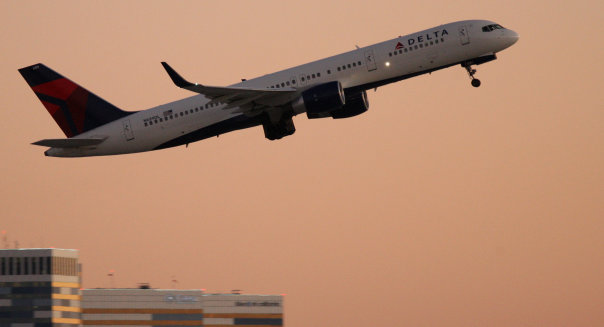
NEW YORK — Don’t believe the hype. Airfare may be going down, but prices in the skies haven’t caught up with those at the pump by a long shot.
It’s become an article of faith among many members of the media that airfares are falling thanks to inexpensive oil prices. Headlines like “Your Florida Vacation Just Got Cheaper” proclaim a new era in dirt-cheap travel and, taken at their word, suggest that the savvy shopper should buy tickets for their next vacation now, now, now while the deals last.
And yes, it is both true that oil prices have plummeted over the past few years and that airfares have also ticked somewhat (but noticeably) down. Unfortunately, the rest of this narrative falls apart upon closer examination.
The nose dive in oil has been a huge boon to drivers out there and, according to some economists, to the entire economy.
Yet while drivers benefit immediately from any change in oil prices, it takes a long time for that to trickle down to airfare, and jet fuel is only one, minor component of ticket prices (although, perversely, one of the airline industry’s biggest costs). In fact, according to airline industry journalist Brian Sumers, when it comes to airfares the price of fuel takes a back seat.
We’re seeing some compression in airfares, but mainly in pockets that are competitive.
It’s all about competition.
“We’re seeing some compression in airfares, but mainly in pockets that are competitive,” Sumers said. “It’s almost all market driven pricing. The price of fuel by itself doesn’t lead airlines to lower their prices, but what happens is airlines can be a little more competitive when fuel is cheap, because they can go into a new market that they might not have gone into when fuel was more than $100 a barrel and stimulate the market a little bit.” “One of the things that you’re seeing is that bigger airlines are [right now] much more likely to match Spirit Airline pricing, so you’re seeing $30, $40, $50 pricing for one way tickets,” Sumers added.
Sumers’s competition analysis catches what many have mistaken for a market-wide response to fuel prices. Yes, airfare is down on average… but not everywhere, not all at once and not by nearly as much as fuel prices. Prices are falling where there is pressure pushing those prices down.
For the rest of the country, airlines have already found what the market will bear.
That’s not to say the price of fuel has no impact or that prices haven’t moved at all in uncompetitive markets. Fares are dropping nationwide, but it’s important not to mistake a single factor (oil prices) as predominant in a market where prices have dropped consistently over the past 20 years.
Instead, according to Sumers, tumbling fuel prices have allowed airlines more flexibility to reduce prices when they have to compete. As the slash-and-burn approach to costs employed by companies like Spirit Air has made them apex predators against legacy carriers like American and United, bottoming out fuel prices allows legacy carriers to “compress” their prices and stay competitive against the newcomers to the market.
The airline industry is an oddly segmented beast, however. It’s not as easy as strolling down the aisle and giving Delta a try just because it’s on sale; some markets are considerably more closed off than others. Few airlines seriously try breaking into Atlanta, for example, Delta’s stronghold for decades, and as a result, price wars there are far less likely.
Cities like Los Angeles or Chicago on the other hand, according to Sumers, are anyone’s game.
For example, according to Department of Transportation data, from the first quarter of 2014 to the first quarter of 2015, average fares out of Chicago dropped about $25 a ticket. Flying out of Atlanta got more expensive by $22 a person.
“It’s not an industry that prices its fares based on how much it actually costs to get from point A to point B,” Sumers said. “It prices its tickets based on how much it thinks its customers want to go from point A to point B.”
Which makes sense, particularly for an industry with such heavy investment in infrastructure. Tumbling fuel prices have given airlines a chance to cut costs and pass that along to the customers but only when the pressure’s on to do so.
What does this mean for saving money on tickets, especially with the holiday travel season coming up? Unfortunately for the average consumer not a whole lot. Travelers headed through New York or Chicago, or anyone who can convince dad to carve a turkey-topped deep dish this November, will save a bit of money. Travelers headed into locked markets will spend a little bit more.
That’s the signal, not to be confused with the noise of sliding airfares overall. Yes, oil prices are way down, and for many pieces of the economy (if not the environment), that’s a good thing. But it’s just one cost in a very complicated machine.
•The Best Luggage for Different Travel Needs
•5 Cool Movie Hotels and Why They’re Still Worth Visiting
•The 10 Most Alluring Amusement Parks in the World


Leave a Reply